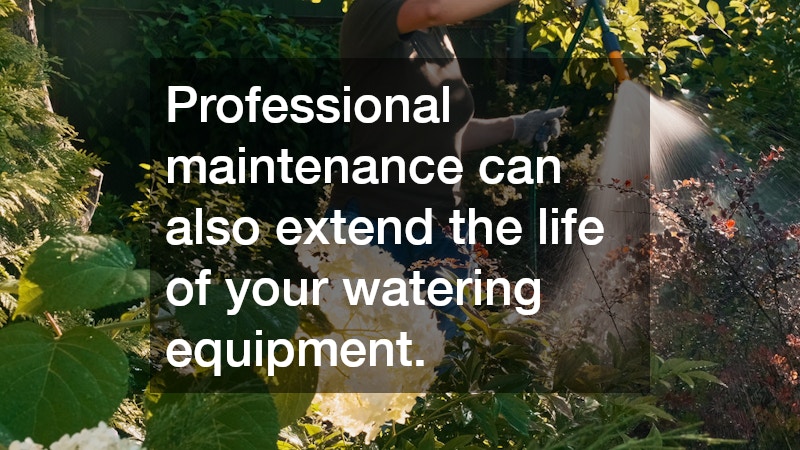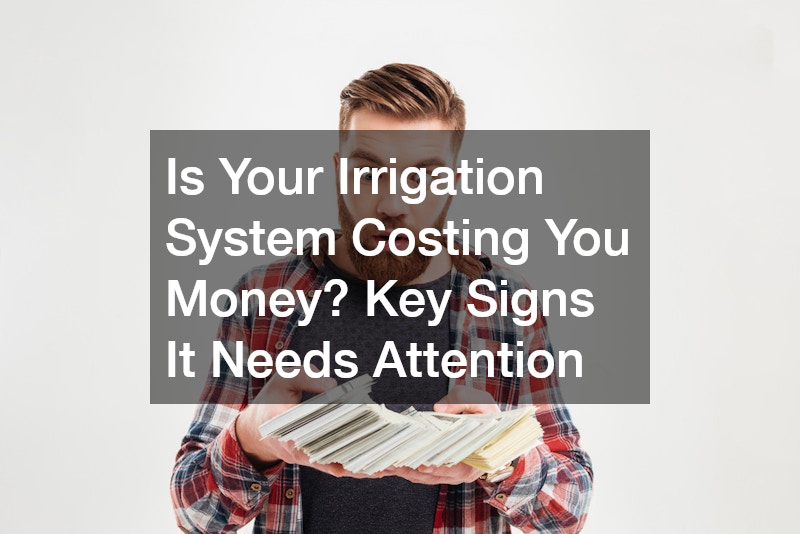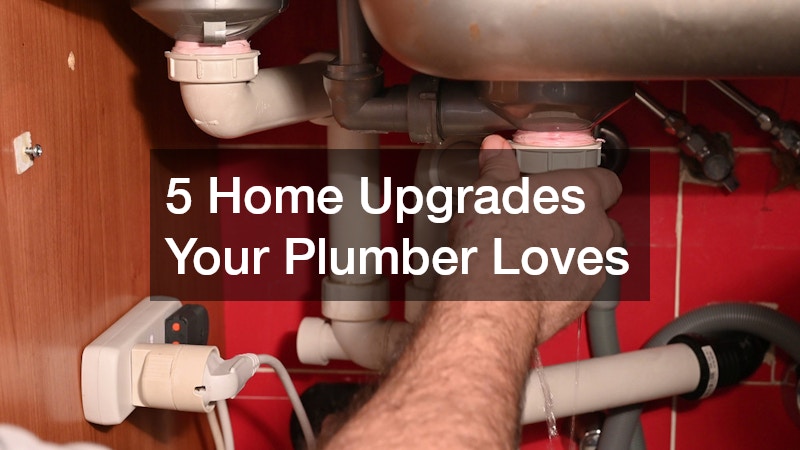Your landscape relies on balanced, efficient watering to stay healthy, but a system that isn’t performing properly can quietly push your expenses higher. Many homeowners don’t realize a problem exists until water bills rise or areas of the yard begin showing signs of stress. Because these systems often run while you’re asleep or away from home, small issues can go unnoticed for weeks. From hidden leaks to outdated components, several common problems can disrupt performance and increase long-term costs. Spotting these warning signs early helps you protect your yard, avoid unnecessary repairs, and prevent wasted water.
An unreliable setup doesn’t just harm your plants—it harms your budget, too.
1. Higher Water Bills With No Clear Explanation
One of the most telling signs that your watering setup may need attention is an unexpected spike in your monthly utility bill. If you haven’t increased your watering schedule but notice your usage climbing, underground leaks could be to blame. Cracked pipes caused by shifting soil, age, or root intrusion can allow water to escape slowly but steadily. Even a small, steady leak can waste hundreds of gallons every month. Sometimes the issue is a valve that no longer closes properly, allowing water to continue flowing long after the system should have shut off. Because these malfunctions are not always visible from the surface, reviewing your water bills regularly is one of the easiest ways to catch problems early.
2. Uneven Watering Across Your Lawn and Garden
Your landscape should receive even coverage, ensuring grass, shrubs, and garden beds all get consistent moisture. When some areas feel bone-dry while others are persistently muddy, it’s a sign that the distribution pattern is off. Clogged nozzles, aging heads, or pipes with partial blockages can cause some zones to receive more water than others. Oversaturated patches can stress plants by suffocating their roots, while dry spots weaken turf and make it more vulnerable to pests. If you walk your yard after a watering cycle, you can often spot areas that look patchy or inconsistent. Fixing these issues promptly not only improves plant health but also prevents wasted water and soil erosion.
3. Sprinkler Heads Showing Visible Wear or Odd Behavior
The components responsible for distributing water suffer wear over time, especially in high-traffic areas. Heads may crack from accidental impact, become clogged with dirt, or fail to rotate properly. You might see misting instead of steady streams, an indication of pressure problems that cause water to evaporate rapidly before it reaches the soil. In other cases, heads that are knocked out of alignment may spray hardscapes instead of plant beds. This type of misdirected watering not only wastes water but can also lead to slippery surfaces or mineral buildup along walkways. Regularly observing how each head performs can make it easier to catch issues early and prevent more costly damage later.
4. A System That Runs at Inefficient or Unexpected Times
Your watering schedule should be controlled by a reliable timer or smart controller. If you notice the system activating in the middle of the afternoon, running twice in one morning, or operating during a rainstorm, you likely have a controller, wiring, or sensor issue. Rain sensors are designed to prevent unnecessary watering, but when they fail, the system continues operating even during wet weather. Power outages or surges may also reset older timers, throwing schedules off completely. When watering happens during the heat of the day, evaporation increases dramatically, meaning plants benefit less while your water bill climbs higher. Checking your controller settings regularly and verifying that sensors still respond properly can help ensure each cycle operates efficiently.
Body Keyword Usage
To keep your system functioning well, it’s important to assess performance throughout the warm months. Many issues can be corrected quickly once you identify the root cause, whether it’s a damaged component or inefficient watering pattern. With just a few seasonal check-ups, you can prevent small problems from growing into expensive repairs. Additionally, understanding how your setup behaves in real time helps ensure that irrigation remains consistent and predictable. Making these inspections part of your routine protects both your yard and your wallet.
Professional maintenance can also extend the life of your watering equipment. A trained technician can identify early signs of wear, optimize pressure distribution across zones, and adjust settings for seasonal weather shifts. These proactive steps improve efficiency and reduce unnecessary water waste. They also help ensure that irrigation supports plant health rather than causing stress from too much or too little water. Whether your system is new or several years old, routine care keeps it running smoothly and prevents sudden failures.A system that runs quietly in the background can easily be overlooked, but it has a major impact on your landscape’s appearance and your monthly expenses. Taking time to monitor performance, check for leaks, observe watering patterns, and verify controller settings allows you to catch issues before they become costly. When everything functions as intended, your yard thrives, your water usage stays under control, and your overall maintenance routine becomes far easier to manage. Paying attention to these key signs ensures your system remains efficient—and helps prevent it from draining your budget one unnoticed cycle at a time.



